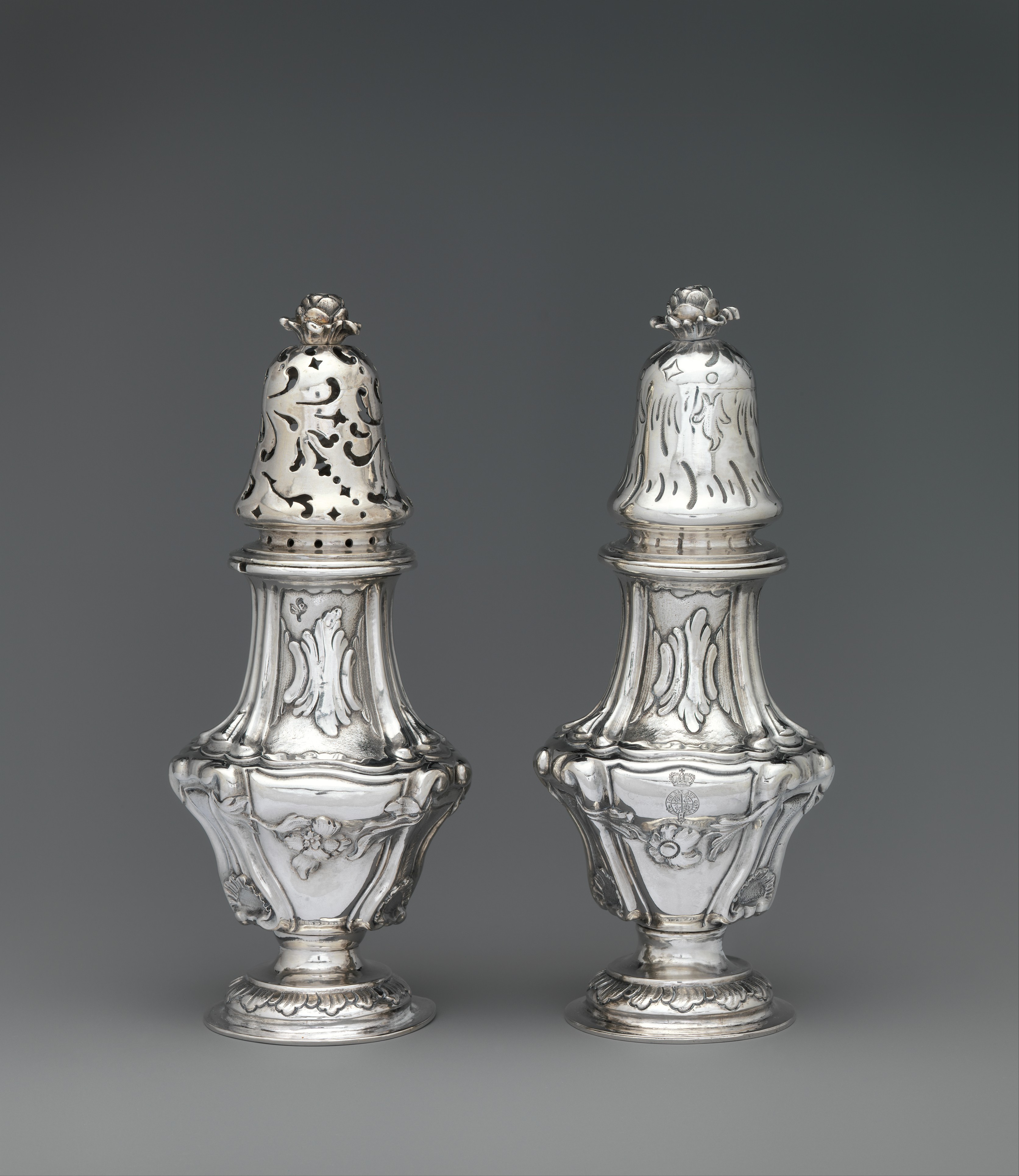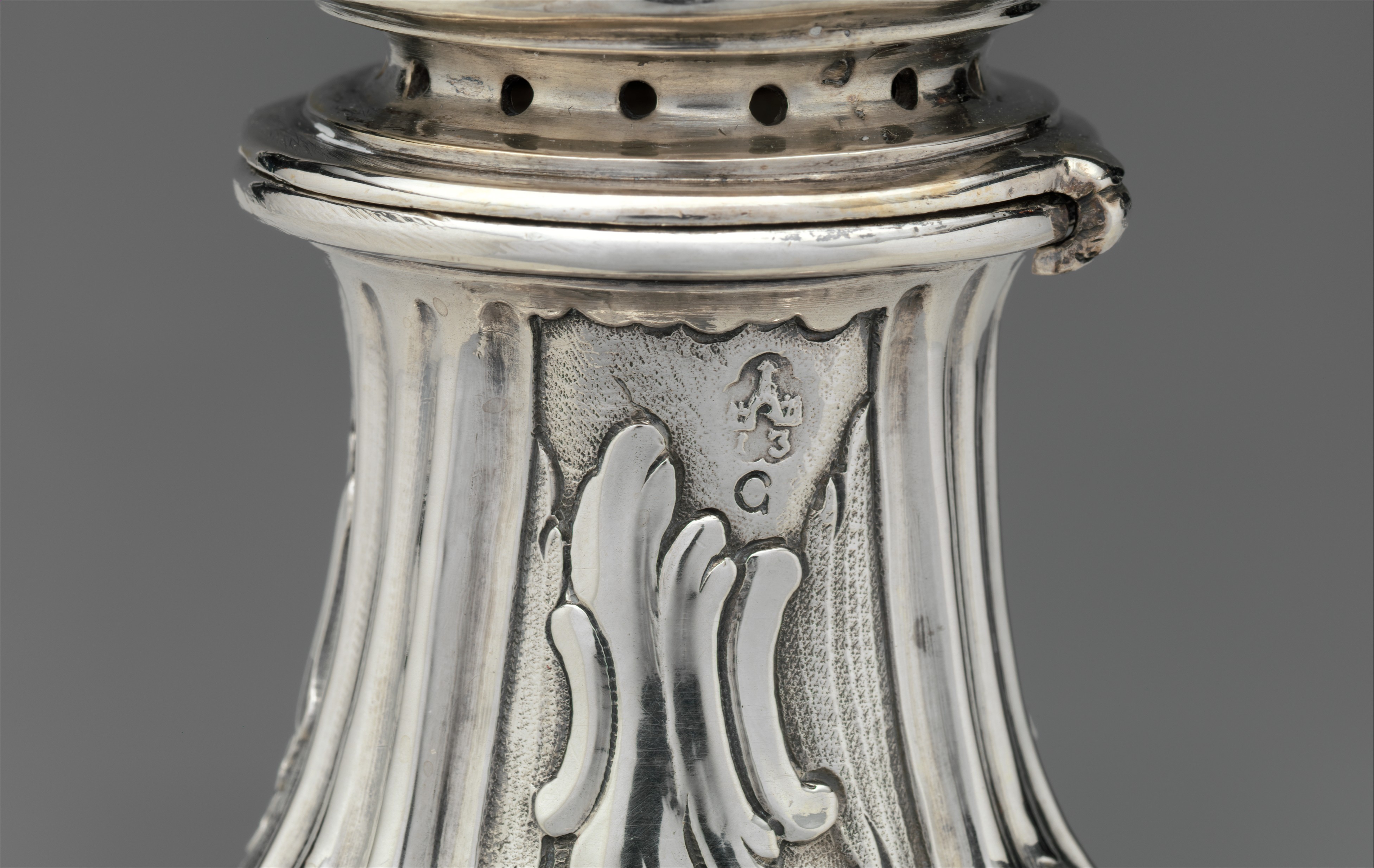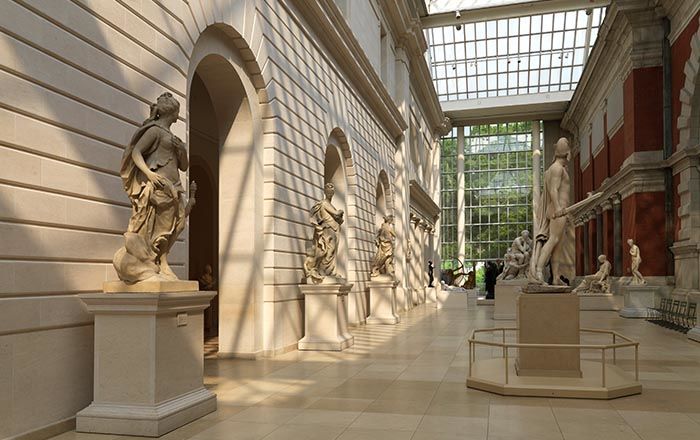Caster
Not on view
Sugar was a rare commodity in the eighteenth century and often surrounded by ceremony. The sugar caster, acc. no. 2010.110.59a, b, with its pierced domed lid, forms a matching pair with the mustard pot, 2010.110.60, with its hinged lid and a slot for a ladle. Sets like this one were very rare on the European continent, which may indicate that the goldsmith or patron was familiar with English silver, where these types were more common. Italian and Austrian Baroque architecture clearly inspired the powerful, bulging outline of this vessel. The engraved arms refer to the family of the Princes of Reuss (Younger Line).
Literature
Marc Rosenberg. Der goldschmiede Merkzeichen. 3rd ed. 4 vols. Frankfurt am Main, 1922–28, no. 9409.
Elemér Kőszeghy. Magyarországi ötvösjegyek a középkortól 1867-ig / Merkzeichen der Goldschmiede Ungarns vom Mittelalter bis 1867. Budapest, 1936, no. 477b [maker’s mark; mentioned as being part of the Prince Heinrich Reuss Collection, Vienna, and called incorrectly “pepper caster and mustard pot”].
Judit H. Kolba. Hungarian Silver: The Nicolas M. Salgo Collection. London, 1996, p. 118, no. 95 (there wrongly identified as “two casters”).
References
Elemér Kőszeghy. Magyarországi ötvösjegyek a középkortól 1867-ig / Merkzeichen der Goldschmiede Ungarns vom Mittelalter bis 1867. Budapest, 1936, nos. 384 [town mark] and 448 [date letter].
Ilona P. Brestyánszky. A pest-budai ötvösség. Budapest, 1977, pp. 312–15.
[Wolfram Koeppe 2015]
This image cannot be enlarged, viewed at full screen, or downloaded.
This artwork is meant to be viewed from right to left. Scroll left to view more.





